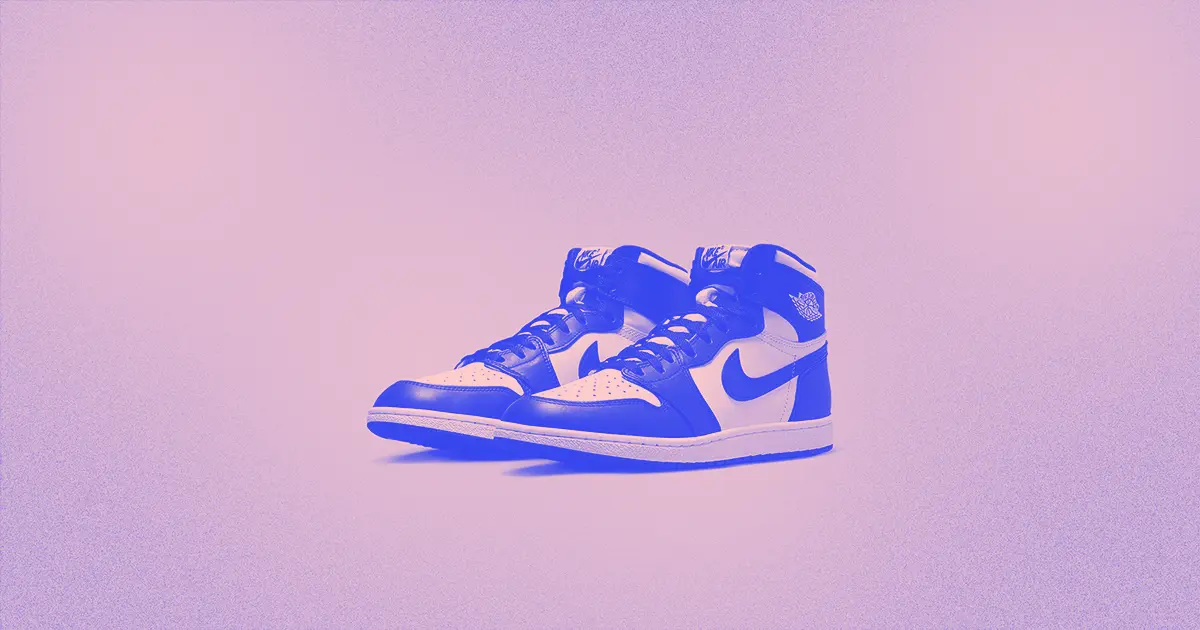There’s no denying that Nike is one of the most—if not the most—renowned brands of all time.
For years, other brands have tried to replicate their magic formula with varying levels of success. What’s certain is that marketers can learn a lot from studying Nike’s approach and figuring out what’s made it so remarkable.
Nike’s success spans fifty years —from their origin in 1964 as Blue Ribbon Sports to the meteoric rise of the Nike Cortez — and we can’t leave out the eternally coveted Air Jordan sub-brand. Their products are as at home in streetwear as they are on the field and are proudly worn everywhere: from peewee sports programs to the most elite Olympians. The result is a company worth 50 billion dollars — with no signs of slowing down.
Nike’s marketing team are master storytellers and have produced fifty years of ads that have and continue to provoke emotion, inspire, and motivate millions of people across the globe. They are crystal clear on their message, understand their brand, and tell their story in an undeniably compelling way.
But how did they do it?
Let’s take a look at some of Nike’s most successful campaigns to understand what they did and how you can apply it to your own marketing campaigns and initiatives.
Lesson 1: Seize opportunities and make bold choices
From the beginning, Nike noticed when unique marketing opportunities presented themselves and jumped into action to take advantage of them. Their bold moves in those moments have been pivotal in driving their success as a brand.
Air Jordan “Banned” — 1985
The Air Jordan is perhaps Nike’s most iconic shoe and one of the most influential sneakers ever. It all started when Michael Jordan was drafted as the third pick by the Chicago Bulls in 1984. Coming out of the University of North Carolina, he was one of the most highly-touted recruits and quickly emerged as a star in the league. Not long after his debut, he signed a five-year deal with Nike for a reported $2.5 million, a deal that was three times higher than any other deal in the NBA at the time.
It wasn’t just the size of the deal that was unusual. Nike also made an agreement with Jordan that he would receive 5% of all Air Jordan products sold — an approach that was unheard of at the time. This made Michael personally (and financially) invested in the success of these shoes. His commitment to them was a key part of the success that followed.
The original Jordan was an unusual-looking shoe with its bold red and black coloring. So much so that it actually violated the NBA’s dress code rules.
Jordan recalls the situation in his book, For The Love Of The Game: "Three games into the season, the NBA did us a huge favor,” he said, “The league banned the shoe because it didn't conform to the rest of the Bulls uniform. But I kept wearing them and David Stern [the NBA commissioner] started fining me. I think it started out at $1,000 a game, then $3,000, and eventually $5,000. It would have cost millions of dollars to come up with a promotion that produced as much publicity as the league's ban did. Right after that, sales went crazy."
Nike saw a golden opportunity and stepped in to pay the fines, ensuring the Air Jordan would stay on the court and helping catapult the shoe to legendary status.
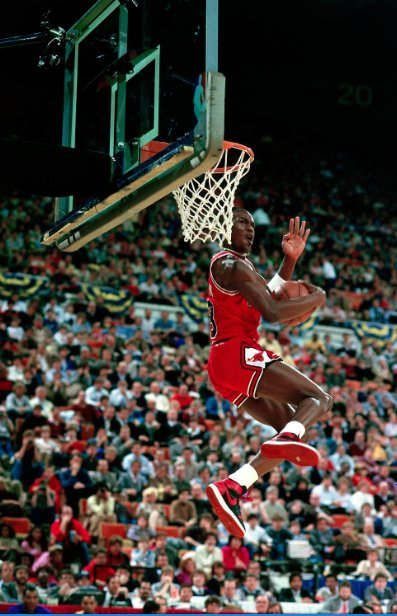
What’s interesting, however, is that it’s unclear how much of the legend is true. There aren’t actually any photos of Jordan on the court wearing the banned Air Jordan 1, and the photo that made them iconic was taken at a 1995 Slam Dunk Contest where the uniform rules weren’t in effect. Most sources suspect the actual sneaker was the Nike Air Ship. However, Jordan and Nike’s team have stuck to their story.
Whether entirely true or somewhat inflated to make the narrative more exciting, the whole incident was a masterful act of mythmaking on the part of Nike’s marketing team. They were on the ball enough to see an opportunity when it presented itself. They were also willing to take a risk, break some rules, and support their athlete. The move helped cement Nike’s reputation as bold and rebellious.
Serena Williams “Superhero” — 2018
You can take the superhero out of her costume, but you can never take away her superpowers. #justdoit pic.twitter.com/dDB6D9nzaD
— Nike (@Nike) August 25, 2018
Nike has stuck with this approach over the years and taken (or engineered) other opportunities to stick up for their athletes and invite controversy head-on. They designed a catsuit for Serena Williams to wear at the 2018 French Open, a significant change from the traditional “tennis whites.”
Bernard Giudicelli, president of the French Tennis Federation, responded that the catsuit wouldn’t be permitted on the court since “you have to respect the game and the place.” The public was outraged for Serena, especially after she explained that the suit was designed to help her avoid postpartum blood clots in her legs and it made her feel like a Wakandan warrior from Black Panther.
Nike responded with an ad featuring Serena and the slogan, “You can take the superhero out of her costume, but you can never take away her superpowers.” Their marketing team used the incident to show how they support women, mothers, and Black athletes in sports. In doing so, they reinforced their brand message that sports should be accessible to all.
Lesson 2: Embrace and connect with your audiences
Nike’s decision to engage with the POC communities that created and defined streetwear and sneakerhead culture was an early driver of their success. It also differentiated them from other sportswear brands that were emerging at the time.
Fashion-forward Black and Latinx kids were the trendsetters who turned sneakers from a simple piece of athletic equipment or a casual comfortable shoe into fashion staples. While other brands resisted or ignored these groups, Nike chose to actively embrace the audiences who were wearing their shoes.
Consumers notice when a brand is happy to receive free advertising, street cred, and money without authentically engaging with them or caring about who they are. Nike’s marketing team has prioritized engaging with many different audiences in a respectful and genuine way over the years. In turn, this has earned them coveted brand loyalty and been a huge reason for their financial success for decades.
Spike Lee — “Mars Blackmon” 1980s & “50th Anniversary” 2022
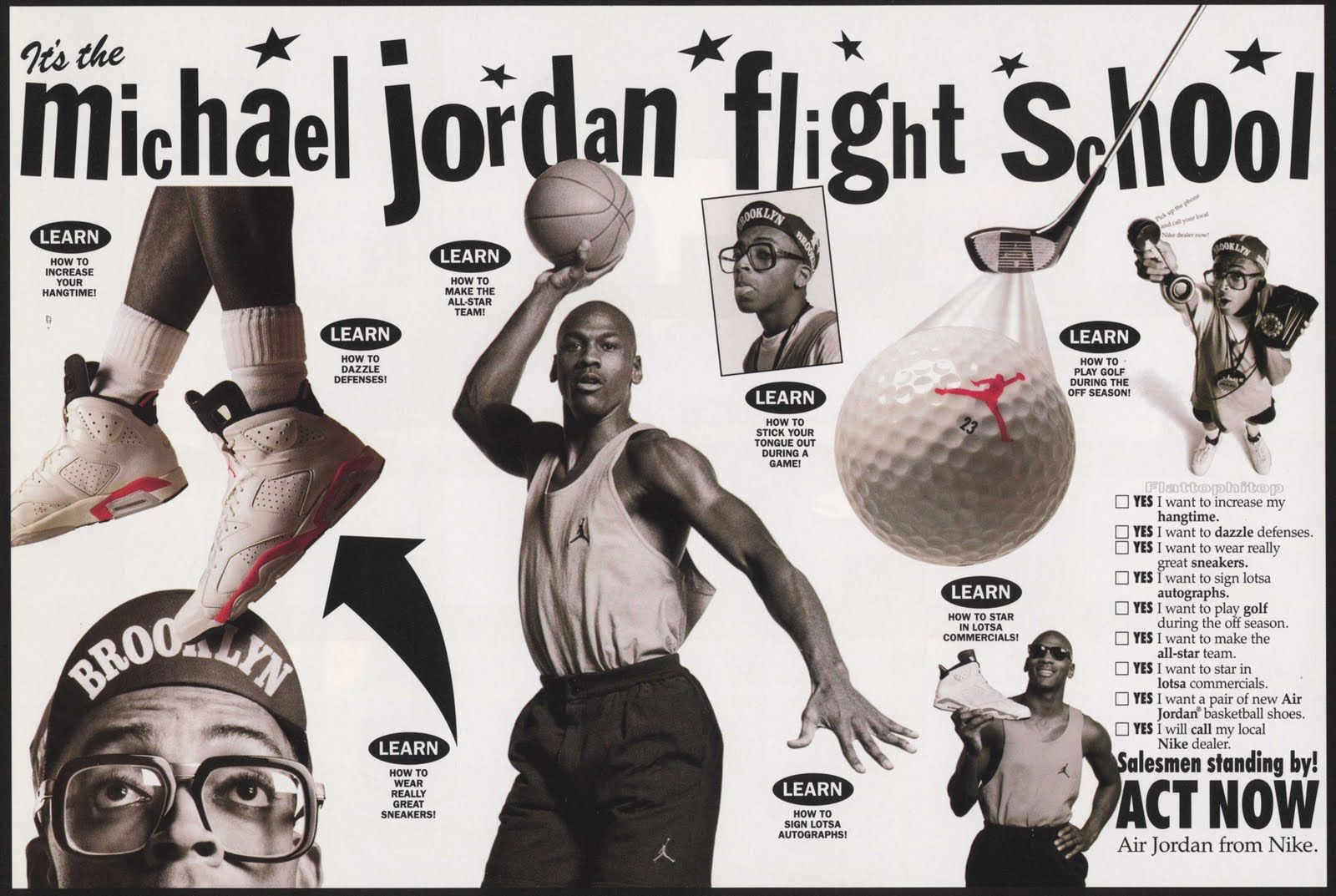
In 1986, a shoestring-budget film was released by an unknown young director named Spike Lee. The film was She’s Gotta Have It and Lee’s character Mars Blackmon was so dedicated to his Air Jordans that he even wore them to bed with the character’s love interest. The film was a big part of the burgeoning sneakerhead culture in the 80s. Sneakers were transforming from a piece of athletic equipment into a fashion statement and nothing was cooler than the Air Jordan.
A lot of brands resisted this association and chose not to affiliate themselves with the young Black men wearing their shoes unless they were professional athletes. Nike, on the other hand, saw the opportunity for what it was. They produced a series of ads for Air Jordan featuring Spike’s character Mars Blackmon alongside Michael Jordan.
Nike’s team gave Spike the creative freedom to infuse the ads with his own distinctive humor and irreverence. They didn’t just use his popularity; they actually had him write and direct the ads. The Mars Blackmon campaign was hugely successful in promoting the sneaker and had the knock-off effect of humanizing Michael Jordan and making him an even bigger star (and better brand ambassador) than he had been before.
The success of these ads illustrates how important it is that brands know the difference between taking advantage of a community and actually engaging with them. By hiring a Black creative and giving him creative autonomy, Nike ended up with an authentic campaign that respected the roots of the entire streetwear movement, bringing those who started it to the forefront.
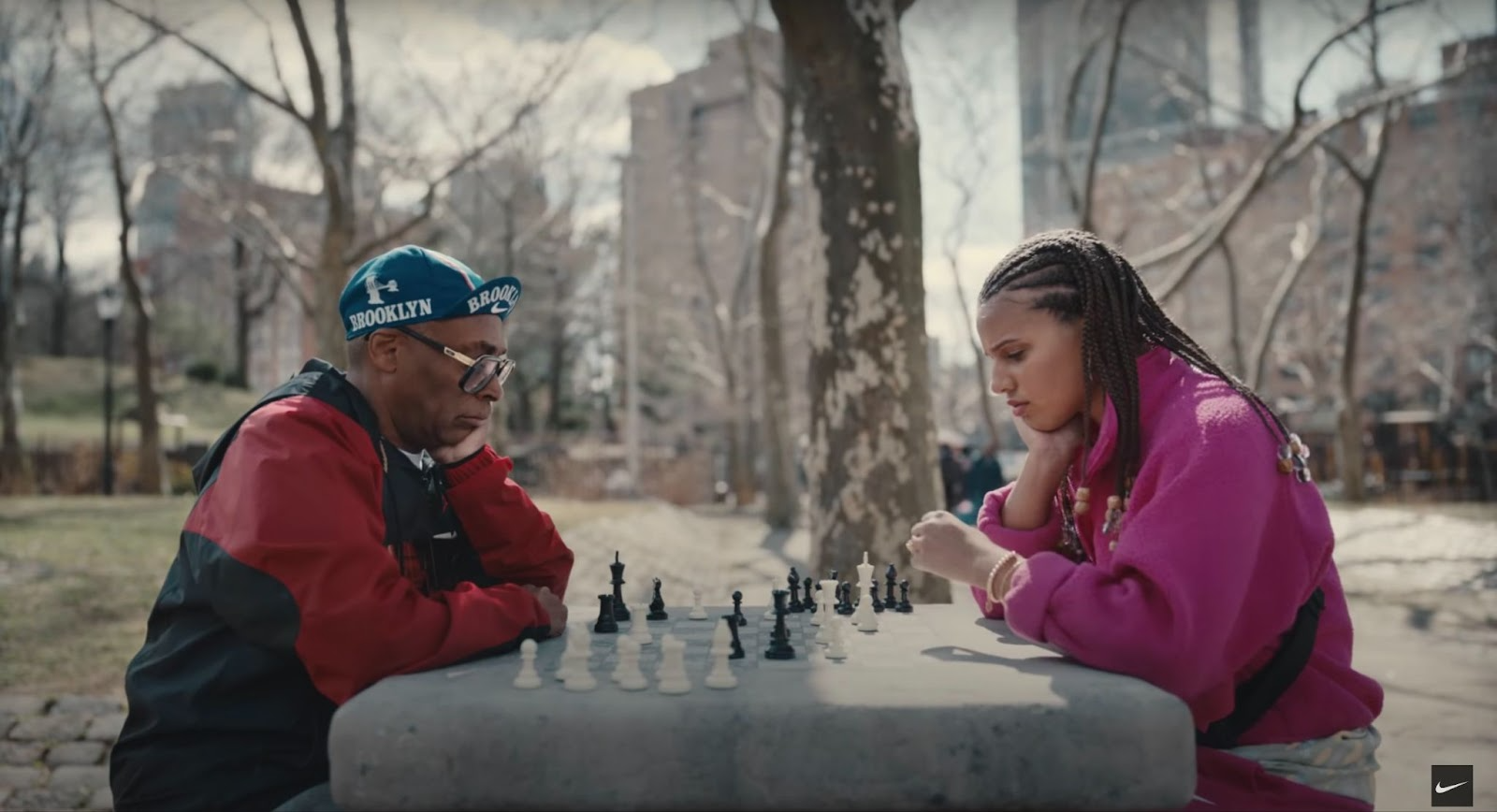
The three-year campaign was wildly successful and helped the Air Jordan fly off shelves despite its significant price tag. Spike’s career took off and he has since become an incredibly influential director and activist who continues to work with Nike, even reprising the character for their 50th-anniversary campaign in 2022.
The Nike Cortez
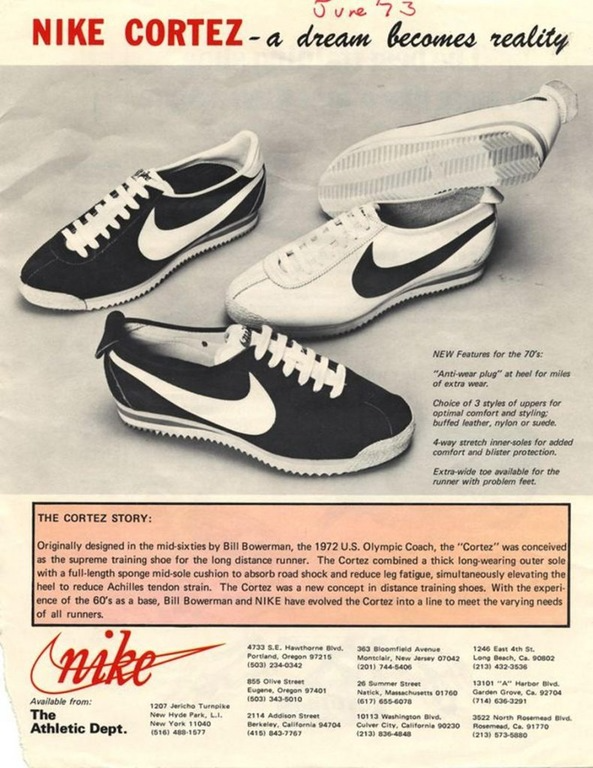
The Nike Cortez was the sneaker that made Nike as a company. Phil Knight and Bill Bowerman originally made the shoe in 1968 for Blue Ribbon Sports in conjunction with their Japanese manufacturer Onitsuka Tiger. The shoe was so overwhelmingly popular that they decided to make a break on their own, rebranding themselves to Nike and launching the Nike Cortez with its recognizable swoosh in 1972.
The newly formed Nike team handed out Cortez sneakers to track and field athletes during the 1972 Olympics, making the shoe’s popularity even more widespread. The Cortez’s comfort, simple but recognizable look, and affordable price point made it broadly popular.
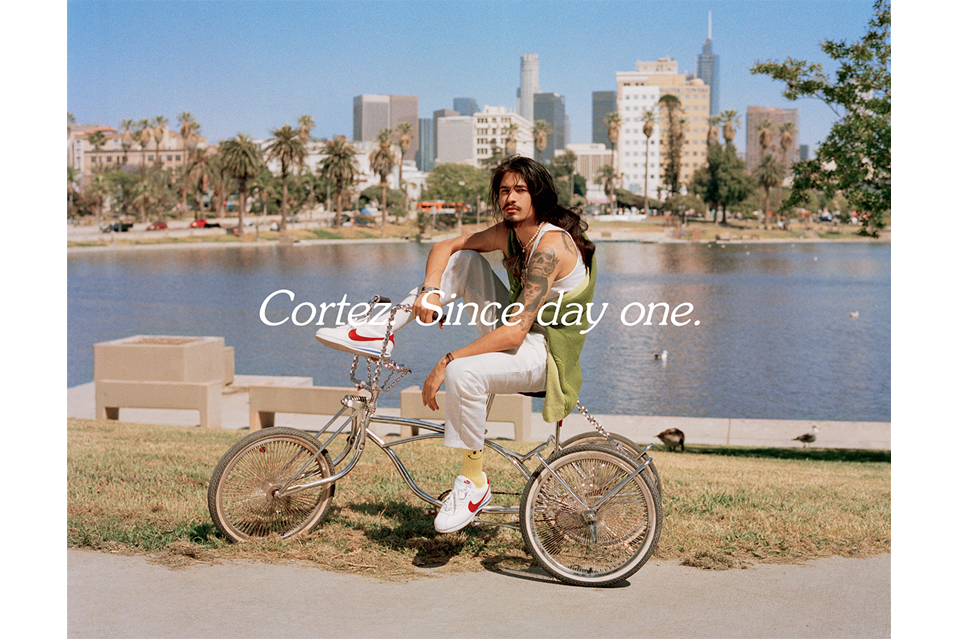
Nike’s marketing team has kept the Cortez current and front of mind for decades with celebrity appearances and product placements. Farrah Fawcett wore the Cortez when she was a Charlie’s Angel. Whitney Houston wore them when she sang the national anthem at the 1991 Super Bowl. In 1994, Forrest Gump wore them to run across the country, sparking a revival in its popularity. They saw yet another revival when Kendrick Lamar signed a deal to promote the shoes in 2017 for their 45th anniversary. In short — the Cortez has never really gone away.
However, it was LA’s Chicano street culture that helped make the Cortez truly iconic in the 1980s, and that association has stuck with the shoe. "The reason I started wearing it was because it was inexpensive," said Nick Engvall, host of the podcast Sneaker History, speaking with NPR, "I wanted a swoosh on my shoe and [the Cortez] was the way that I was going to be able to have that without spending $100 on a pair of Nike Air Jordans."
Nike has recognized the Latinx connection to the Cortez consistently, especially in recent years. They have partnered with Chicano artists, designers, and musicians like Mister Cartoon and Alexis Quintero to create special edition shoes and ad campaigns. These collaborations acknowledge the nostalgic and personal connection the Latinx community has to the shoe and keeps that history alive.
Lesson 3: Know who you are as a brand
Nike has an incredibly strong brand, and their marketing strategy is always grounded in that brand identity. Nike’s mission statement is short and simple:
To bring inspiration and innovation to every athlete* in the world.
*If you have a body, you are an athlete.
The most important part of that mission statement is the asterisk:“ If you have a body, you are an athlete.” When Nike thinks about their audience — everyone and anyone is someone who can strive, compete, and accomplish great feats – even if they’re just personal goals.
Just do it
Nike’s “Just do it” tagline is one of the most recognizable marketing slogans in the world. The phrase is decisive and bold – and it can be applied to so many different activities or situations in life and speaks to the inclusivity of Nike’s approach. “Just do it” can apply as easily to a young Black girl trying to beat the odds and make it to the U.S. Open as it can to an 80-year-old man out for an early morning jog over the Golden Gate Bridge.
“We actually don’t believe in slogans,” VP of brand marketing Davide Grasso explained to Creative Review. “Instead, what we’ve found to be most effective is inviting people to join us in what we believe in and what we stand for…I think that’s why ‘Just Do It’ has had such an impact over the last 20 years and continues to.”
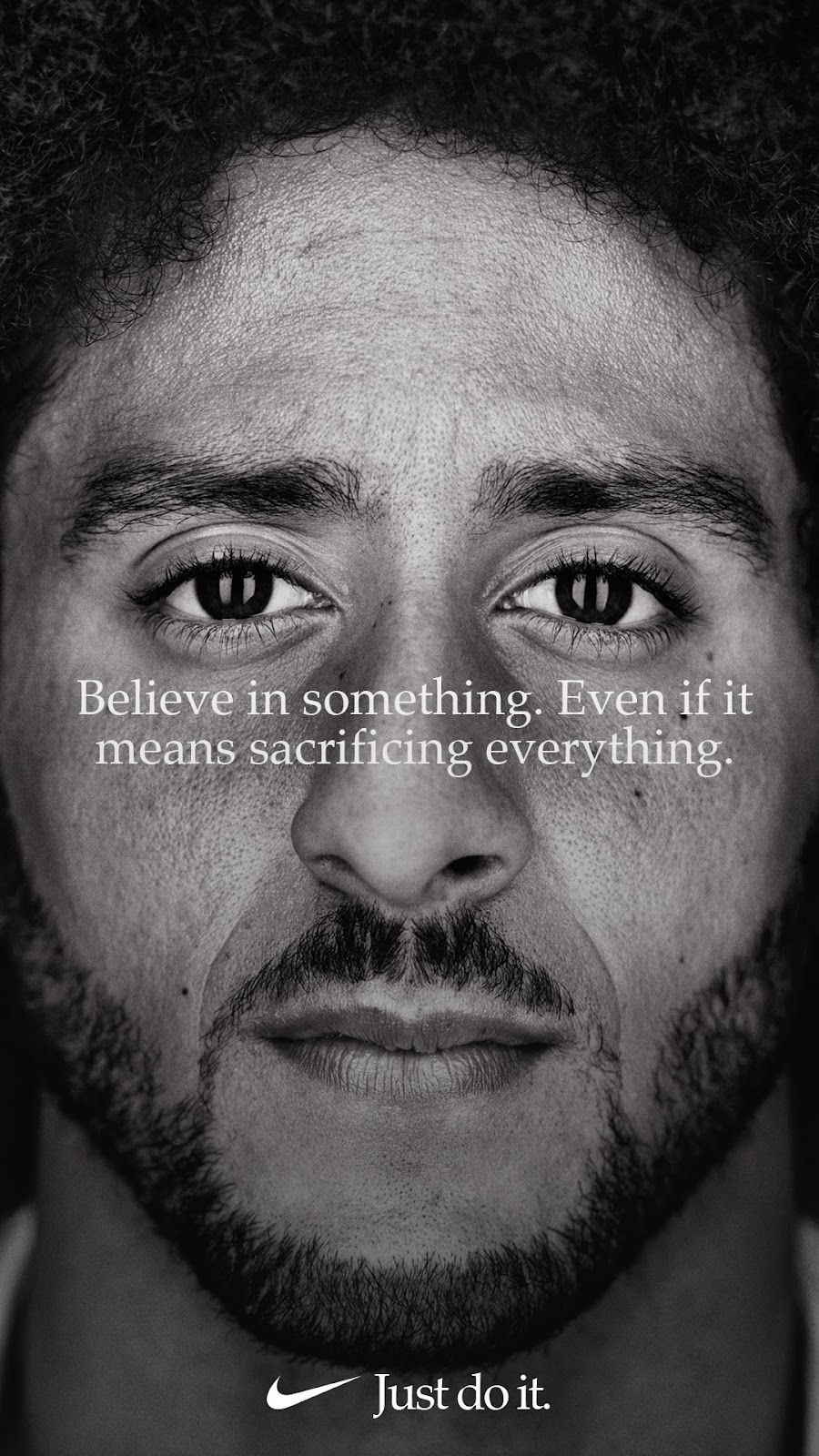
For the 30th anniversary of the slogan, they used “Just do it” as a rallying cry for bold action in the face of opposition — off the field as well as on it. They produced a “Just do it” ad featuring Colin Kaepernick after he knelt in protest during the National Anthem. Nike didn’t send any press releases for the ad launch, and instead Kaepernick launched the campaign with his own tweet and put the power of his story and the message in his own hands.
Despite pushback the ad experienced, Nike, doubled down in the face of criticism, producing a full video ad with Kaepernick urging the audience to “Dream Crazy.” Standing for their mission paid off, and the “Dream Crazy” ad won an Emmy.
A Quinnipiac University poll showed that despite the outcry, 67% of respondents under 35 actually approved of the campaign. Nike knew their audience and knew their message, and the bold stance paid off.
Create your own revolutionary brand
Nike’s marketing has been astonishingly consistent over its fifty-plus years in business. The styles have changed, and the aesthetics have been refreshed, but the spirit has remained consistent.
![An image of soccer player Alex Morgan looking over her shoulder. Overlayed on top is the slogan " Dream with us." [NIKE LOGO] "Just do it."](https://cdn.prod.website-files.com/687e8d1b96312cc631cafec7/68c4a26fb2621701831584cf_6478c5541eb5c42610f332ac_58632421.png)
When you truly know who you are as a brand, there’s more freedom to play. This means marketers are able to dream big, riff endlessly, take on risky ideas, and develop an endless array of campaigns that still share a common foundation.
Nike’s been serious. They’ve been irreverent. They’ve been wholesome and controversial. They’ve made ads with grand scope and focused on mundane everyday lives. They can even play with our own expectations of their brand to surprise us or comfort us with a familiar message.
The best lesson marketing teams can take from their example is that truly successful marketing comes from studying your own brand, knowing it inside and out, and then being brave enough to take bold and decisive action with it.



















Tips and strategies from best-in-class organizations
In our ebook, learn how lean teams can overcome organizational obstacles, quantify your team’s impact, and plan and execute your marketing strategy.


